Utah County Birders Newsletter
|
 |
Contents
April Meeting
Upcoming Field Trips
Captain’s Log
Bird of the Month
Backyard Bird of the Month
March Hotline Highlights
APRIL MEETING:
Thursday, April 9th,
2015 - 7:00 pm
Past President Ned Hill will be presenting
on his trip to Ecuador.
Meet at 7:00 pm at the Monte L. Bean Museum. 645 East 1430
North, Provo, UT http://mlbean.byu.edu/
Saturday,
April 4th, 2015. 8am - 11am. Bird Walk along the
Jordan River Trail at Inlet/Model Airplane Park in Saratoga
Springs. Meet in the model airport parking lot on the north side of the road. If
time permits, we may also drive over to Powell Lake. Directions to Model
Airplane Park -
http://www.utahbirds.org/counties/utahco/JordanRiverAirfield.htm
Saturday, April 18th, 2015. 7:30am-12pm. South
Utah County hotspots. Meet at the Provo East Bay Sam's Club parking
lot. We will bird a number of places at the south end of the county, depending
on what's being reported.
We are actively recruiting people to lead local half-day field
trips, any time, any place. If you would like to lead a field trip or if you
have any ideas for this year’s field trips, please contact Bryan Shirley at -
bt_shirley@hotmail.com
Utah County Birders Captain’s Log:
April 2015
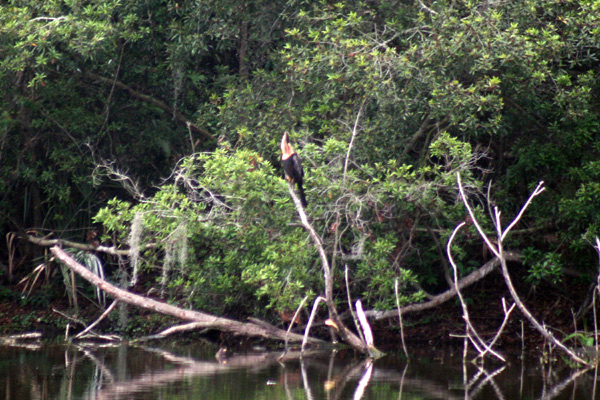 |
|
Anhinga in the rain |
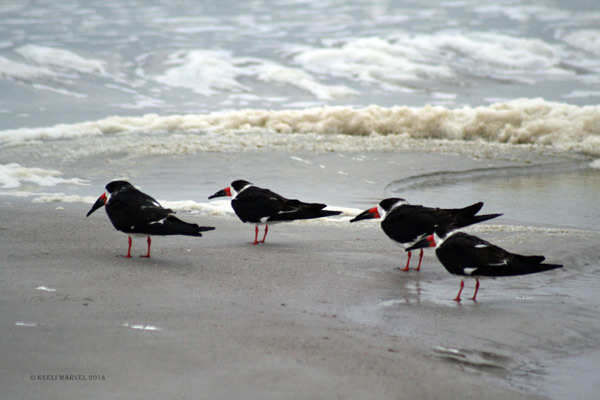 |
|
Black Skimmers |
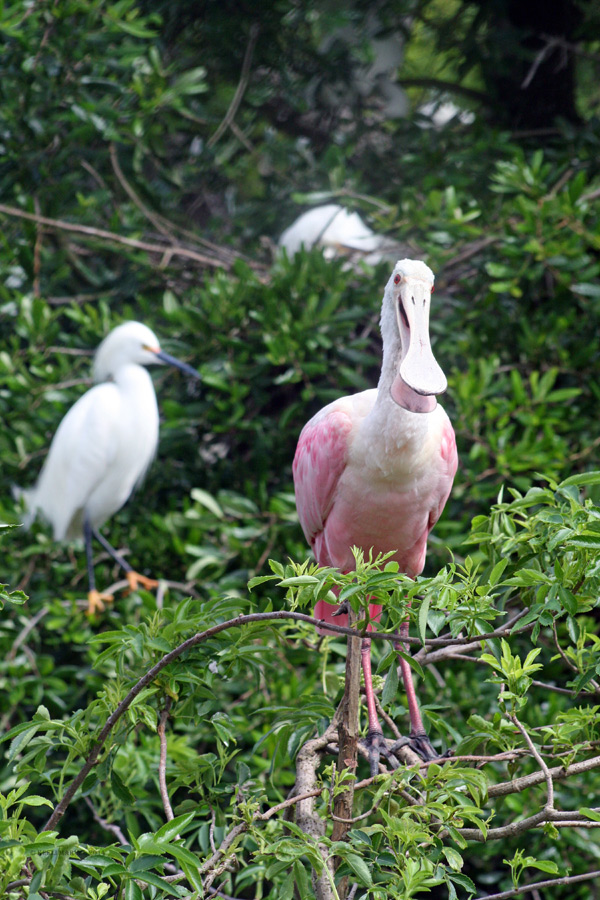 |
|
Chatty
Spoonbill |
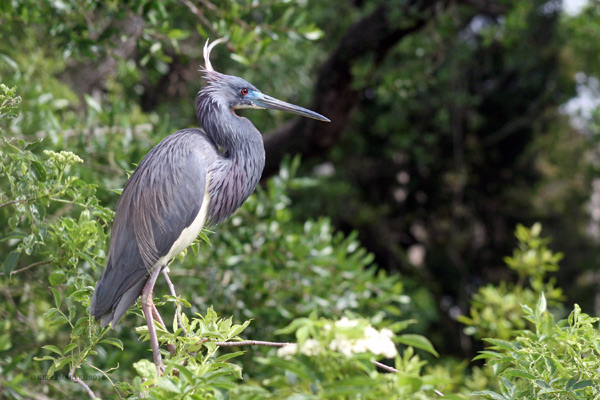 |
|
Fierce Tricolor |
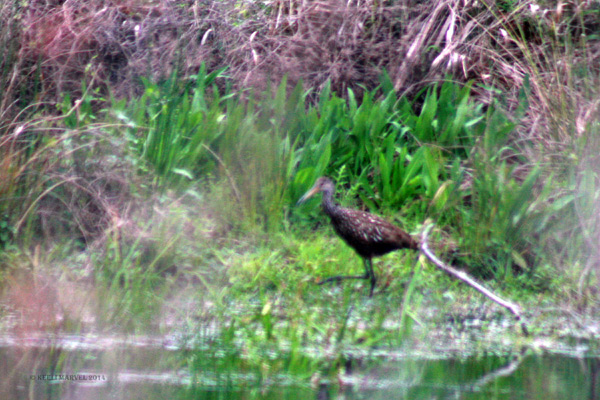 |
|
Limpkin |
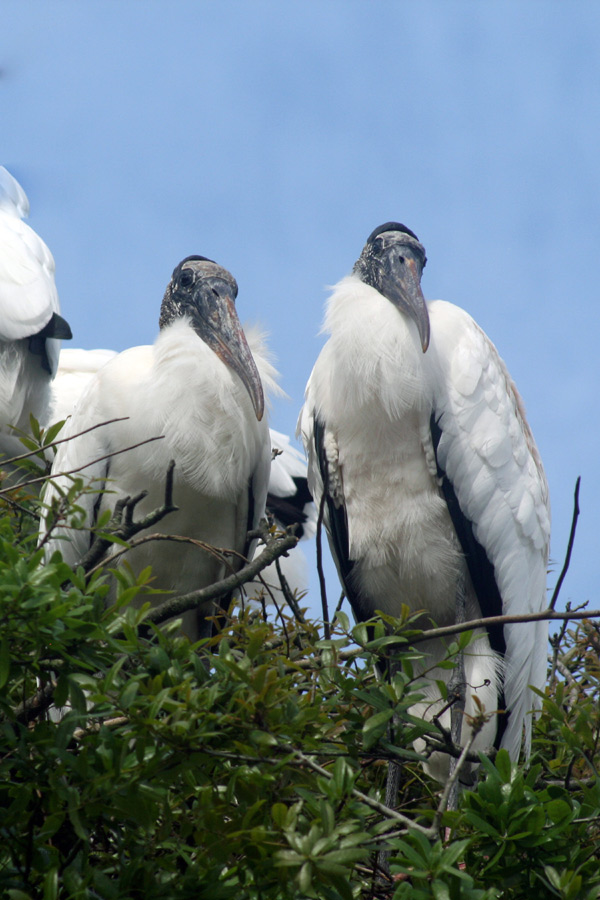 |
|
Wood Stork |
by Keeli Marvel
I just got back a day or so ago from a work trip to
Jacksonville, Florida. I spent a great deal of time in meetings learning
techniques for dealing with pests on military installations, but every chance I
got, I ducked out to do a little birding. Around the rain storms and the
training meetings I managed to pick up 12 new species for my life list. I
emailed the Duval Audubon Society before heading down there to find out the best
locations to see a few of my target birds, and they gave me some great
suggestions.
My first afternoon there I got out of meetings a little early, and I headed to the Home Depot where a Wood Stork had been reported. I dipped on the Wood Stork, but found a Red-shouldered Hawk being mobbed by a pair of Northern Mockingbirds. My next stop was Westside Industrial Park (an area that reminded me a lot of Flowserve). This area was pretty busy with semi trucks making deliveries, but I drove loops around the industrial park dodging semis and checking every little pond I could find, and I was rewarded with my first look at Anhingas and Limpkins in additional to Blue-winged Teal, Cattle Egrets hanging out in a field of – what else – cows, and a large flock of White Ibises. With a couple hours of light left I headed out to the coast to Neptune Beach. A storm moving in had scared off most of the people at the beach, but the birds were enjoying the peace and quiet. I got some great up close looks at Black Skimmers, Laughing Gulls, Least Sandpipers, and Ruddy Turnstone before heading in for dinner.
The next afternoon I had a couple of hours to kill so I headed over to a local park called Ringhaver Park. The park had two little ponds where I picked up a Little Blue Heron, and a pair of female Hooded Mergansers. Ringhaver Park has a trail that winds through the woods, over a swampy area, and ends with a boardwalk over a marsh to a little dock on the Ortega River. The birds were pretty quiet, but I tracked a mixed flock of warblers moving through the upper canopy in the trees and picked out a Black-and-White Warbler. Other birds included Northern Cardinals, Blue Jays, Red-bellied Woodpeckers, and a probable Wood Thrush foraging along the ground near the beginning of the trail. Back in the parking lot I spent some time puzzling over a small flock of warblers foraging along the edge of the baseball field, but they turned out to be Western population Palm Warblers in various degrees of breeding plumage. There were also Osprey nesting and both American and Fish Crows (identified by call) cruising the area.
Our workshop location was right on the St. John’s River which gave me opportunities for bird watching during breaks in meeting sessions as well. During one of those breaks I wandered down the river and along a nature trail the Naval Air Station had established in a marshy area along the river. There I picked up a Yellow-throated Warbler for my life list. I saw quite a few other species included Red-bellied, Downy, and Pileated Woodpeckers, Carolina Wrens, Eastern Bluebirds, and Horned Grebes on the river.
My second to last day in Florida I headed out first thing in the morning to chase eBird reports of Wood Stork and Painted Bunting. My first stop was a park called Blue Cypress Park where I picked up a lifer Brown Thrasher and a few more Palm Warblers. Next stop, out on the St. John’s River, I wandered around some hiking trails getting better looks at an Anhinga on one of the ponds until I got rained out by an incoming storm. Discouraged at that point, I picked my next stop, Spanish Pond at Timucuan Ecological and Historic Preserve off the eBird recent Wood Stork sighting map, and realized that I was unintentionally following the Great Florida Birding Trail. As luck would have it, this turned out to be a great spot. Spanish Pond is located just off a parking lot and serves as the starting point for a network of hiking trails in the Timucuan Ecological Reserve. The pond was actually a mudflat that was chock full of a staggering variety of herons, egrets, ibises, gallinules, and black vultures. The numbers there were incredible. I counted something like 59 Snowy Egret, 2 Great Egrets, 3 Cattle Egrets, 21 Little Blue Herons, 2 Great Blue Herons, 2 Tricolored Herons, 2 or 3 Green Herons, 100+ White Ibis, 8 Black Vulture drying their wings off after the last rainstorm, and a handful of Common Gallinule, Wood Ducks, and piles of turtles (tortoises?). I stood there for quite a few minutes just taking it all in. Still dipping on the Wood Stork, I decided to hike out along the trails to an observation platform out on the marsh. Out on the platform, I could hear Clapper/King rails calling from the marsh. Along the way back, I stopped at a bench for a rest and a mixed flock of warblers came through with Black-and-white, Yellow-rumped, Yellow-throated, and Northern Parula Warblers. I picked up a lifer Blue-headed Vireo that seemed just as interested in me as I was with him, and got some great looks as he flew in close and chirped at me. A couple very humid miles later I arrived back at the start to find the much-sought after Wood Stork perched on a snag at Spanish Pond ironically right where I’d begun. I think sometimes the birds are messing with us and our efforts to see them :-p
On my last day in Florida, I was excused from participating in wrap-up board meetings and so I headed south to St. Augustine. I’d highly recommend a stop in St. Augustine to anyone visiting that part of Florida. It is listed as the oldest continuously-occupied town in the US, and has lots of great things to see and do. I climbed up to the top of the St. Augustine lighthouse, wandered down the beach, and headed to the Alligator Farm where they advertised a rookery of local nesting birds. I was surprised to find that several species of wild birds choose to nest there because the alligators keep raccoons and other predators away. This provides opportunities to get amazing up close looks at Roseate Spoonbill, Snowy, Great, and Cattle Egrets, Wood Stork, and Tricolored, and Little Blue Herons all demonstrating courtship behavior, building nests, and sitting on eggs. In addition to the wild rookery, the Alligator Farm has on display quite a few avian and reptile species from all over the world and seems to do a pretty good job educating visitors and raising awareness of conservation needs and efforts for many of the species. I would highly recommend a visit if you are in the area.
At the end of my trip to Florida I’d picked up all of my target species except the Painted Bunting. I guess I’ll have to chase that down another time. I really enjoyed my time spent there and can provide birding/dining/tourist recommendations for anyone planning a visit to that area in the future.
Just a note as well – spring
is arriving in Utah and the birding is really starting to pick up. If anyone
has suggestions for destinations or wants to volunteer to lead future birding
trips, let us know. Hope to see you all out and about birding and at our
monthly meetings!
Happy Birding!
Keeli Marvel
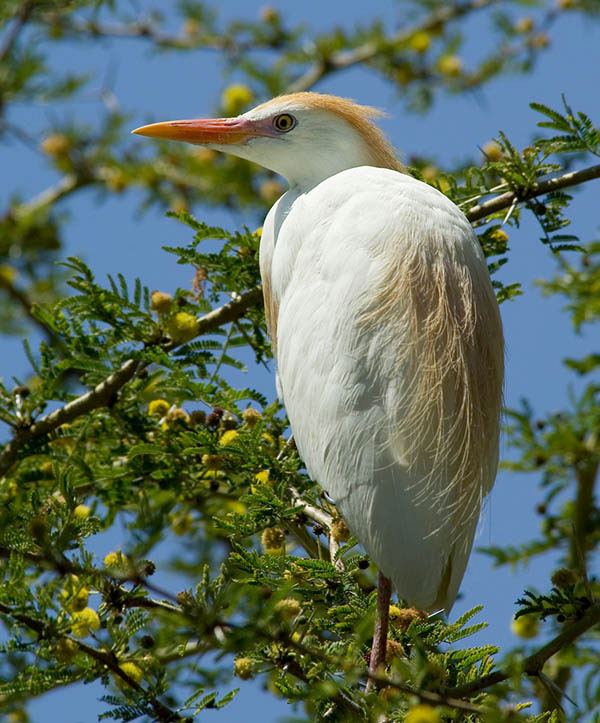 |
|
Photo by John
Crawley |
Cattle Egret
Bubulcus ibis
by Sheryl Serrano
Spring is here
and it’s time for the return of the Egrets. Today I will share a little bit
about the Cattle Egret.
My favorite Cattle Egret memory is probably the first time I ever saw one.
Machelle and I were driving up to BRMBR. We were driving along the freeway when
we spotted some white birds in a field with some, well, cattle. We actually
pulled off on the side of the freeway and walked back to get a good look at
them. I certainly hope I am not incriminating myself, but hey, we’re birders.
The Cattle Egret (bubulcus ibis) is a short, thick-necked egret that spends most
of its time in fields rather than streams. It forages at the feet of grazing
cattle, head bobbing with each step. Cattle Egrets have broad, adaptable diets:
primarily insects, plus other invertebrates, fish, frogs, mammals, and birds.
They feed voraciously alone or in loose flocks of up to hundreds. Foraging
mostly on insects disturbed by grazing cattle or other livestock, they also
glean prey from wetlands or the edges of fields that have been disturbed by
fire, tractors, or mowing machinery. Grasshoppers and crickets are the biggest
item on their menu, which also includes horse flies, owlet moths and their
larvae, cicadas, wolf spiders, ticks, earthworms, crayfish, millipedes,
centipedes, fish, frogs, mice, songbirds, eggs, and nestlings.
This stocky white heron measures 18-22 inches in length and is noticeably
smaller and more compact than other herons. They have relatively short legs and
a short thick neck. The straight, dagger-like bill is shorter and thicker than
other herons. They have medium-length, broad, rounded wings. The Cattle Egret
has beautiful yellow plumes on its head and neck during breeding season.
Originally from Africa, it found its way to North America in 1953 and quickly
spread across the continent. Elsewhere in the world, it forages alongside
camels, ostriches, rhinos, and tortoises—as well as farmers’ tractors. In
Britain and Europe, the Cattle Egret is also known as the Buff-backed Heron in
reference to the color of its breeding plumes, but in many languages it is
simply called Cow Crane, Cow Heron, or Cow Bird, or is named for the wild
grazing animal with which it usually associates -- e.g., Elephant Bird,
Rhinoceros Egret, or Hippopotamus Egret. The Cattle Egret’s Arabic name, Abu
Qerdan, means “father of ticks” and refers to the abundance of ticks in Egyptian
heronries.
Cattle Egret nest in dense colonies of stick nests in trees or emergent
wetlands, often mixed with other species of herons. The male establishes pairing
territory (in or near colony) and displays there to attract mate. Displays
include stretching neck and raising plumes while swaying from side to side,
making short flights with exaggerated deep wingbeats. Nests are built mostly by
female, with materials mostly brought by male.
References: Cornell Lab of Ornithology (All About Birds), Birds
of N. America Online, Audubon.org
If you would like to
write an article for the Bird of the Month, please contact
Machelle -
machelle13johnson@yahoo.com
Click here for past 'Birds of the Month'.
March 2015
Jack Binch - Sandy
A pair of Kestrels that are thinking about nesting in my owl box.
Jeff Cooper - Pleasant Grove
I heard and then saw a Say's Phoebe. I get a sense of peace when I hear the song of a Say's Phoebe.
Eric Huish - Pleasant Grove
Our pair of wild Mallards returned to our small pond a few days ago.
They show up to nest each year. As soon as the babies hatch they leave.
Milt Moody - Provo
In the third month of the year in Provo, good things come in threes. I saw three
Mountain Chickadees all at once, then three Cedar Waxwings, then
three Cassin's Finches -- 3x3!
Alton Thygerson - Provo
Downy Woodpeckers - Same two reported last month coming to suet feeders.
Lately, I’ve heard them drumming in the morning.
Report your favorite backyard bird
each month to Eric Huish at 801-360-8777 or
erichuish@gmail.com
The Utah County Birders Newsletter is now online only/mostly.
We've decided to stop the regular paper mail version of the UCB Newsletter. This will save our club on Printing, Postage and Paper. If you would like an email notice each month when the Newsletter is posted online please send an email to Eric Huish at erichuish@gmail.com.
We are willing to print the online version of the newsletter and mail it out to anyone who still wants a paper copy or who doesn't have internet access. If you know of anyone who enjoys the UCB Newsletter but doesn't have internet access please let Eric Huish or Keeli Marvel know and we will make sure they get a copy.
Printable Version of this UCB Newsletter